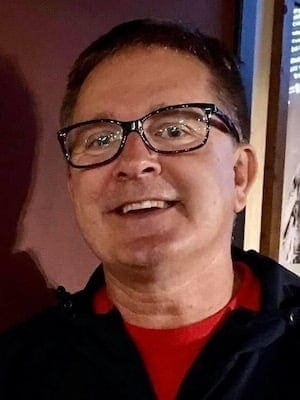“Teachers are builders,” said my friend. “You build safe learning environments for your students. You build safe spaces for your parents. You build knowledge and experience for yourselves. You build community with each other. You are builders.”
I like her image.
This year I’m going to work on the “building community with each other” part.
I’ve been reading Congressman John Lewis’ book “Across That Bridge: Life Lessons and a Vision for Change” and reflecting on his experience as a leader of the civil rights movement.
On May 4, 1961, John Lewis and 12 original Freedom Riders left Washington, D.C., on a Greyhound bus traveling to New Orleans. There were seven black folks and six white folks.
They shared seats with each other throughout the bus. They planned to test a Supreme Court ruling that made segregation in interstate transportation illegal.
They rode safely through Virginia and North Carolina but found trouble when they arrived in my state of South Carolina.
On May 9, 1961, they stopped at the bus station in Rock Hill, S.C. Albert Bigelow, Lewis’ seat mate, got off the bus first. Lewis followed him.
They were savagely beaten by a violent mob.
They chose not to press charges against their attackers.
“We simply told them that ours was not a struggle against individuals,” writes Lewis. “It was a struggle against injustice. We got back on the bus and kept pressing on.”
Lewis writes that faith, patience, study, truth, peace, love and reconciliation helped build the civil rights movement and transform the United States.
I’ve been thinking about these tools and wondering how I can use them to build community among the students, families, faculty and staff at my school.
For Lewis, “faith” was knowing deep in his heart that equal rights for all people would overcome white supremacy – no matter how much social and political forces fought against it.
He knew the hammer and nails of this faith would help build up the beloved community, a community freer and more peaceful than the hateful society white supremacy had built.
He was a builder.
As a teacher, “faith” is knowing deep in my heart that children like James are going to make it.
“I need you, Mr. Barton. I need Mrs. Roberts. I need all my teachers,” he said to me one day as we were walking back from my Response To Intervention classroom to his 4th-grade classroom.
He has a great memory and can recall small details from long stories – as long as you are reading those stories to him.
He reads at a first-grade level. His spelling is indecipherable, so he struggles to write out what he knows and thinks.
He has me to teach him how to read and write. He has Mrs. Roberts to nurture his math and listening skills. He needs all of his teachers to see him, love him and use their gifts and talents to help him become all that he can become, to help him make it.
He needs us to be a community for him.
That is how I’m going to use faith to help build community among my colleagues at school.
When social and political forces fight against us and tear us down, I’m going to help us think about James to build us up.
When the temptation to think “kids like James just can’t learn” tears us down, I’m going to tell the story about the time he jumped up with a raised fist and shouted “I did it!” when he read a page fluently and with no errors in a grade-level story.
I’m going to remind us that he needs us. I’m going to remind us that the work we do every day in our classrooms and in his life can and will make the world a better place for him. And for us. I know it can.
Trevor Barton teaches second grade and is a member of First Baptist Church in Greenville, S.C.
A fourth grade public school teacher and member of First Baptist Church in Greenville, South Carolina.

